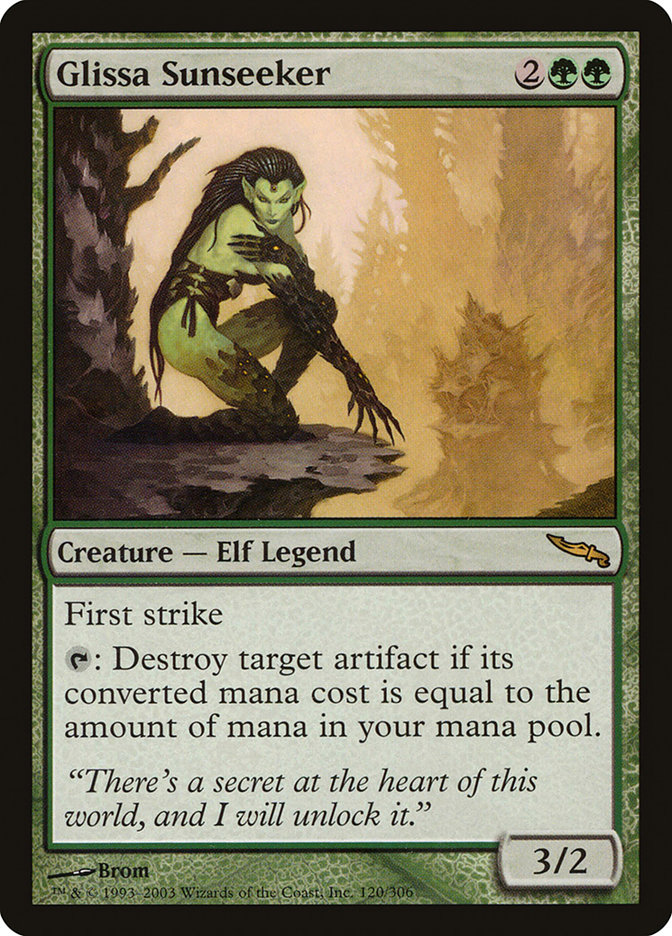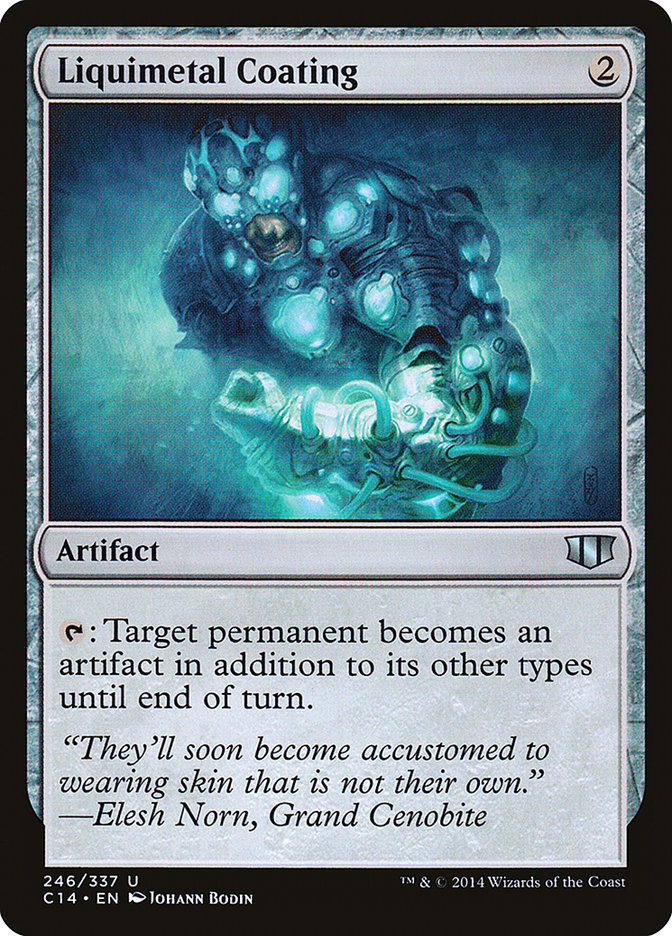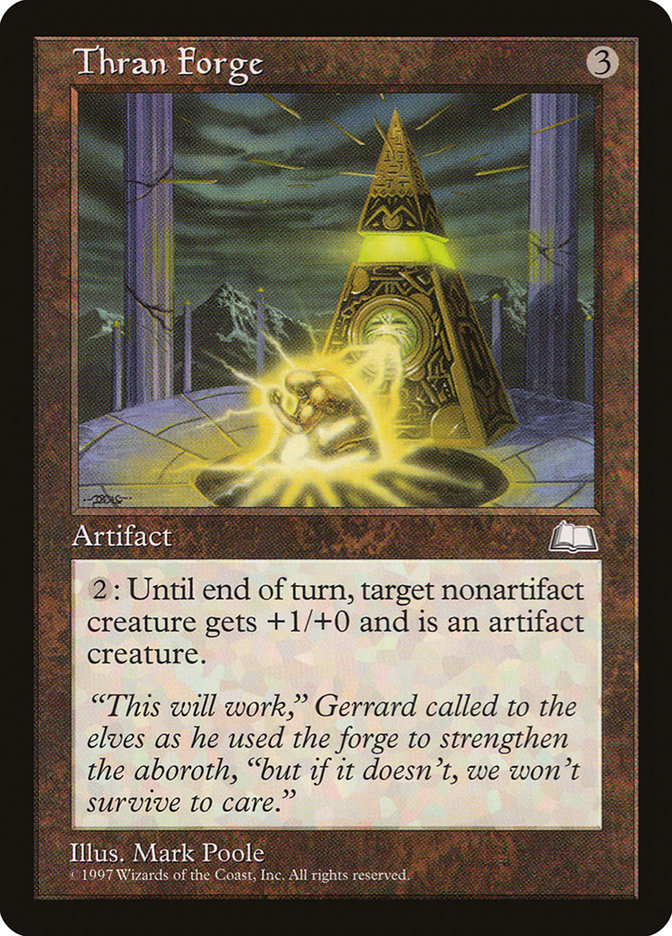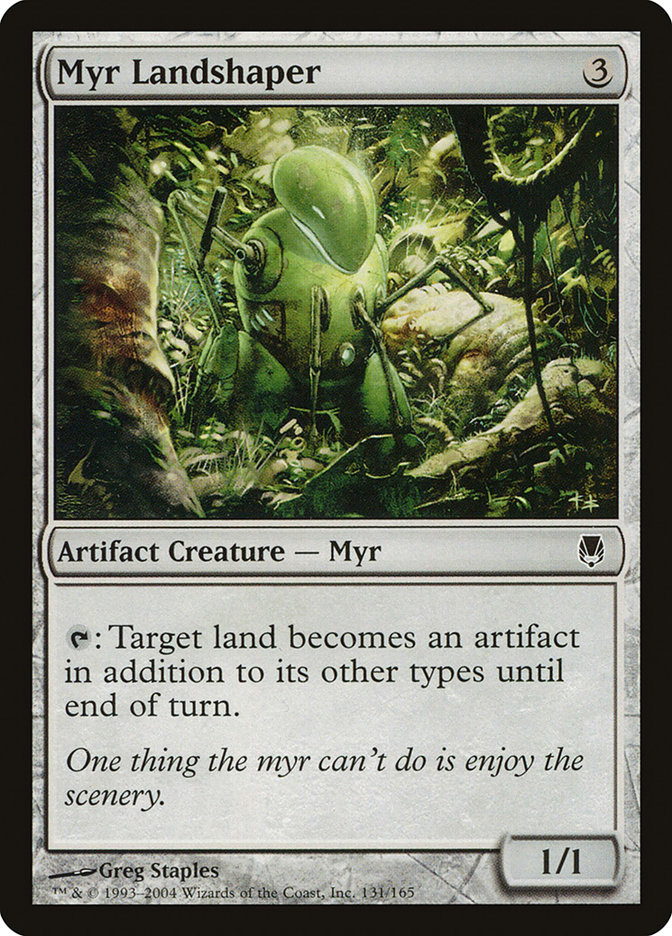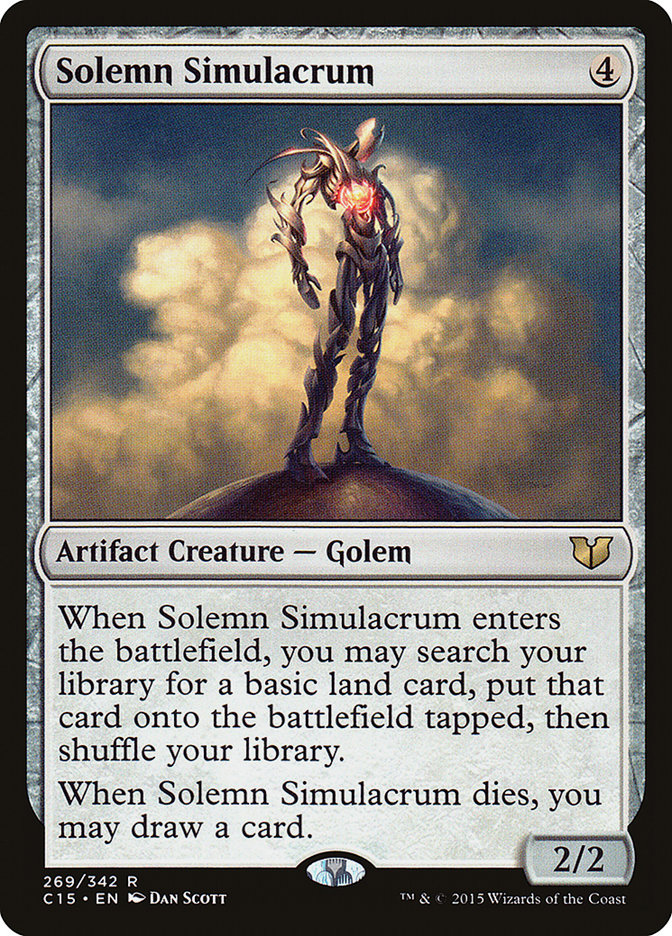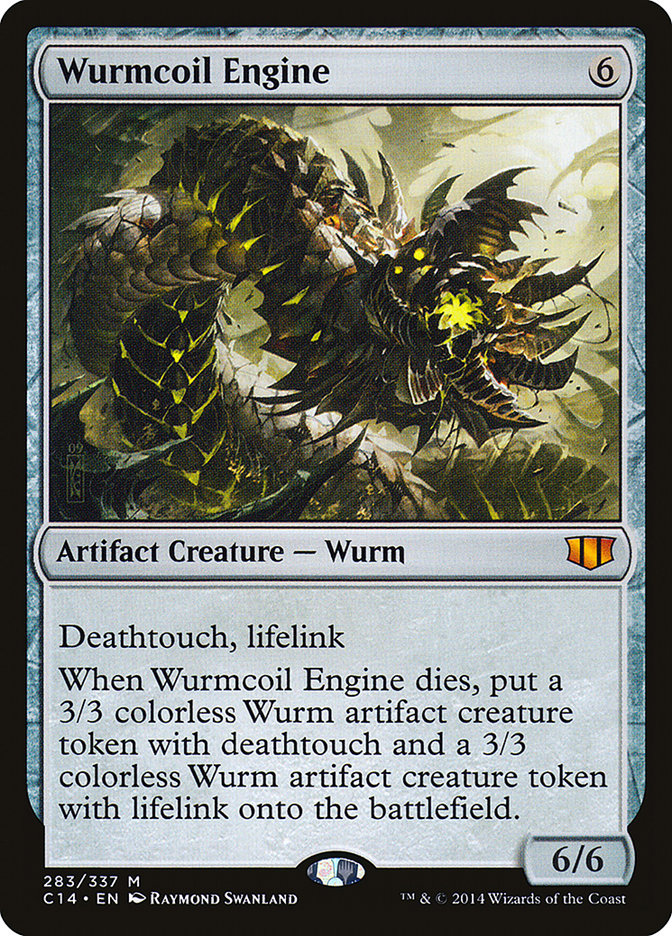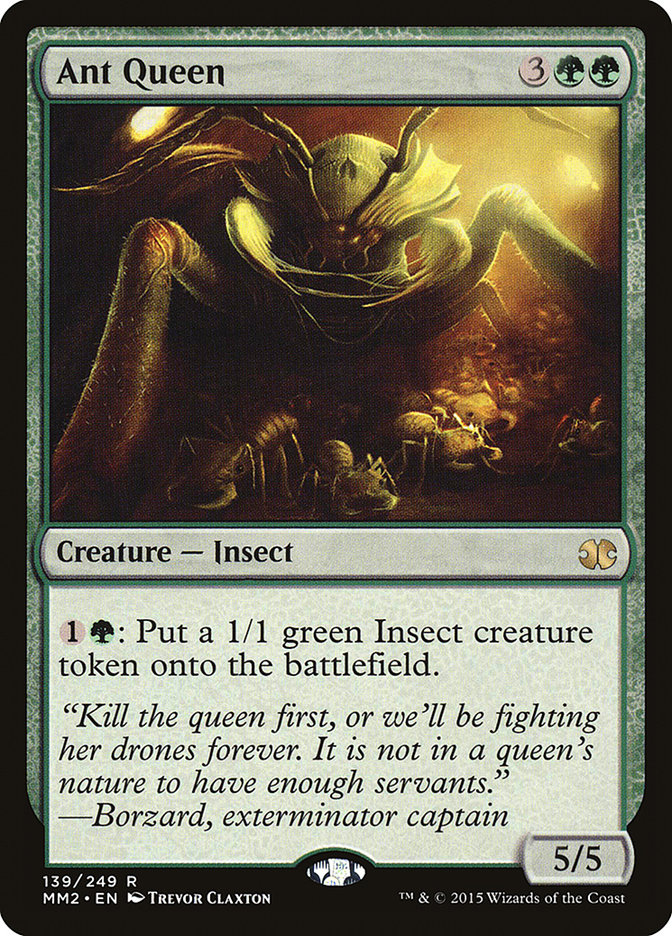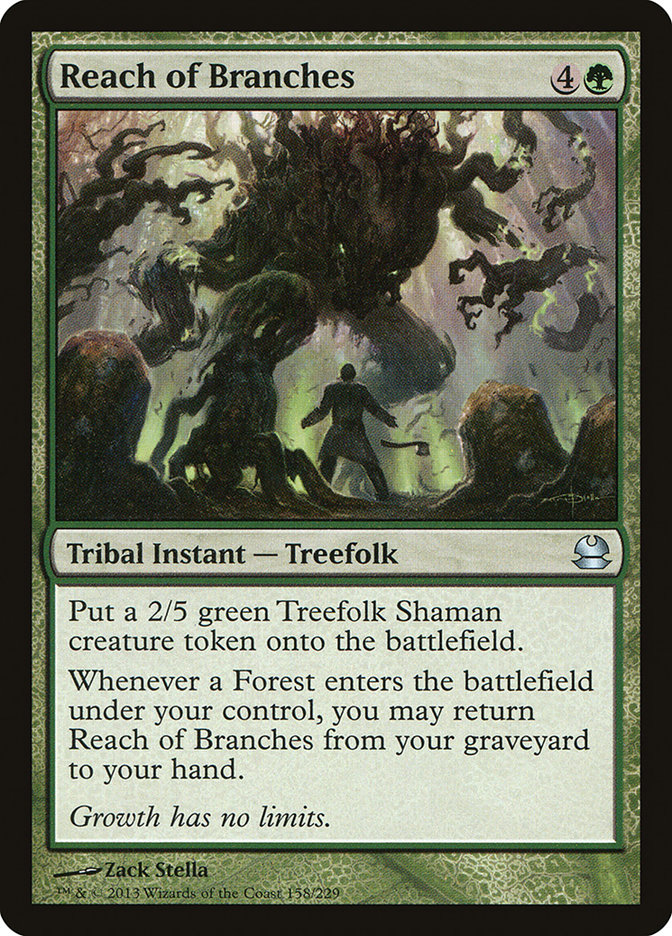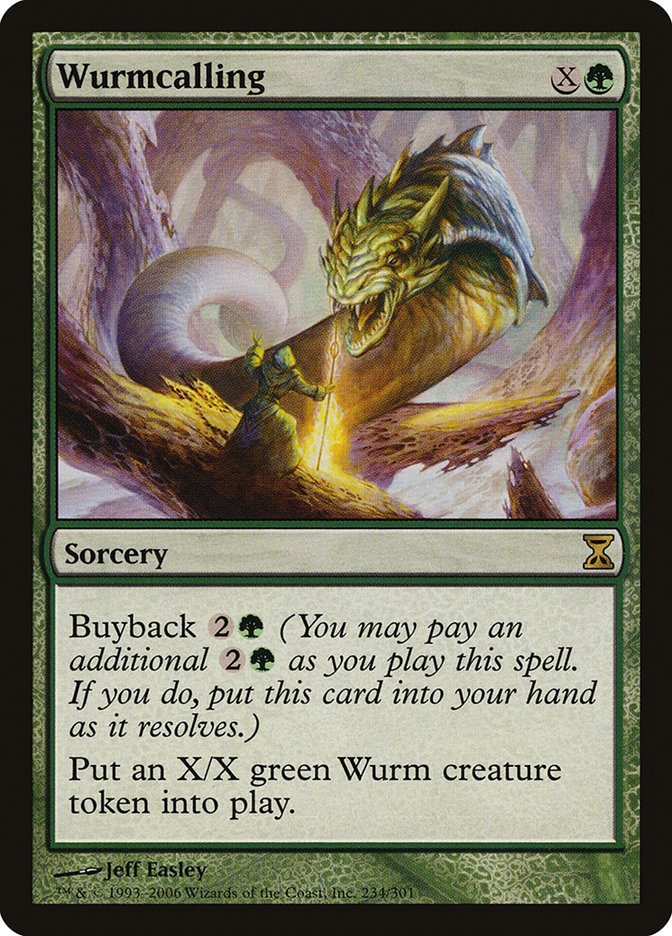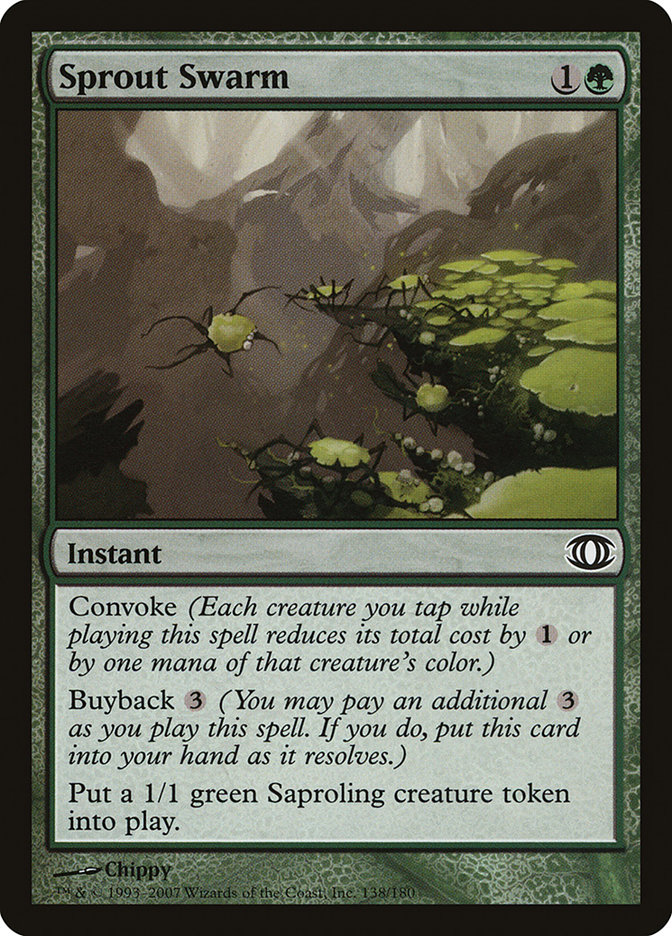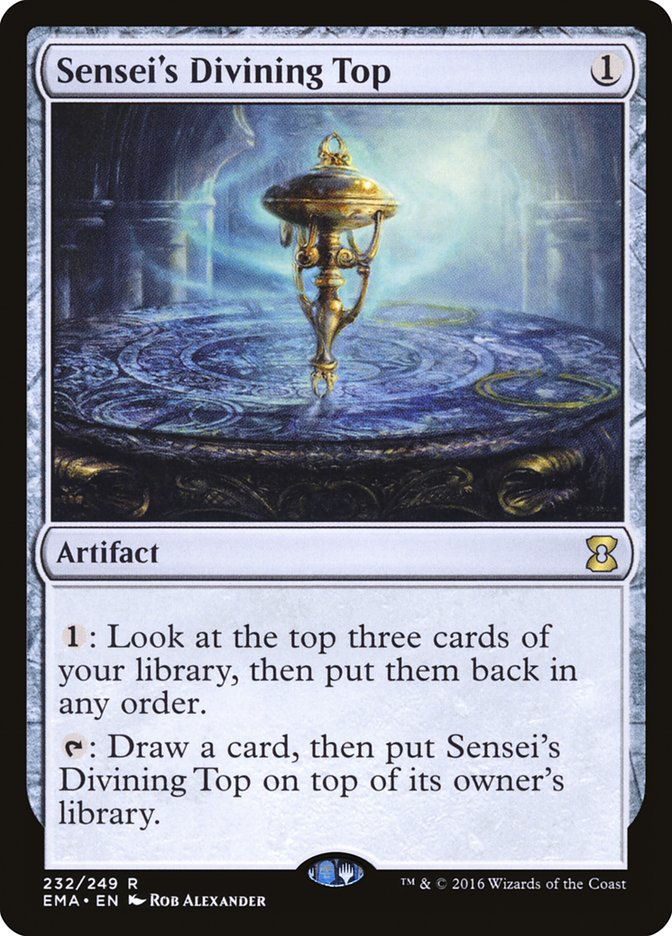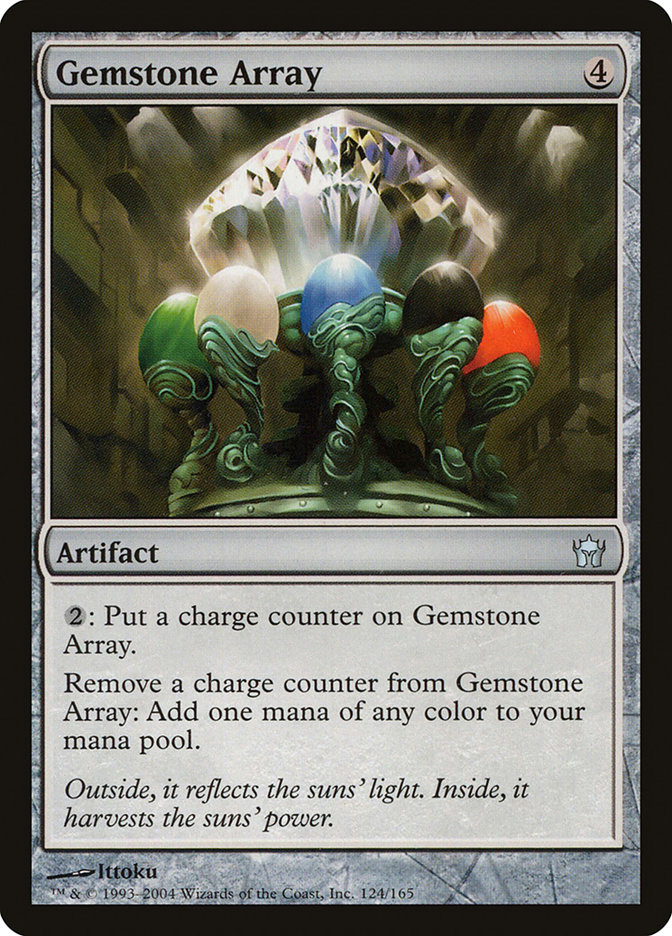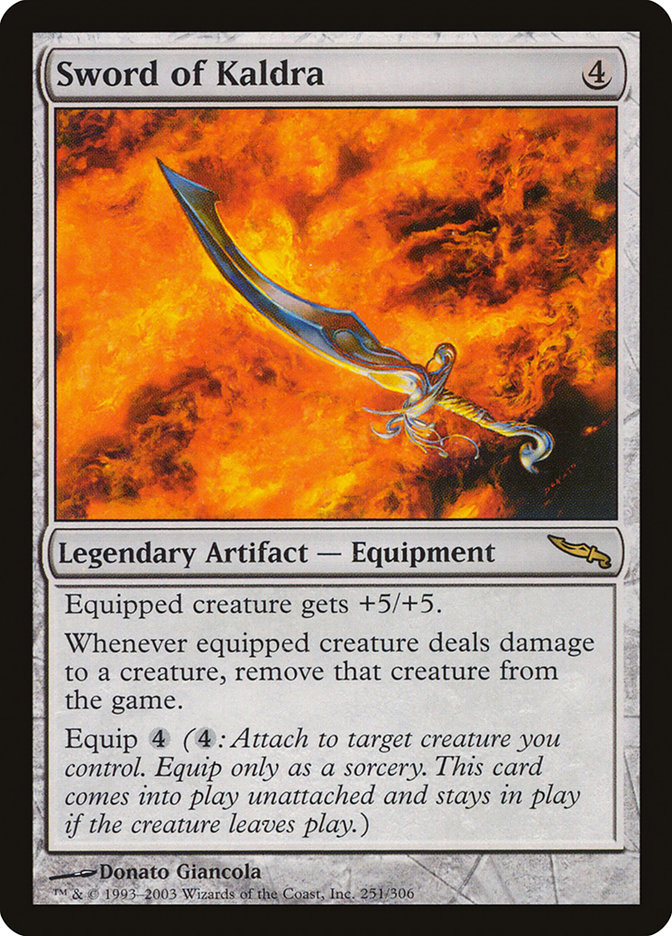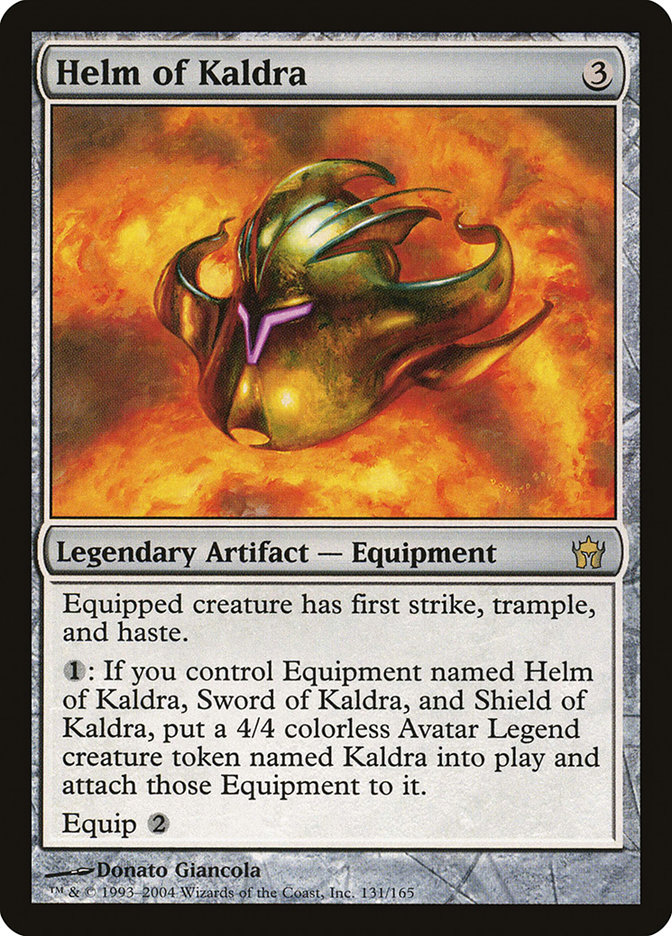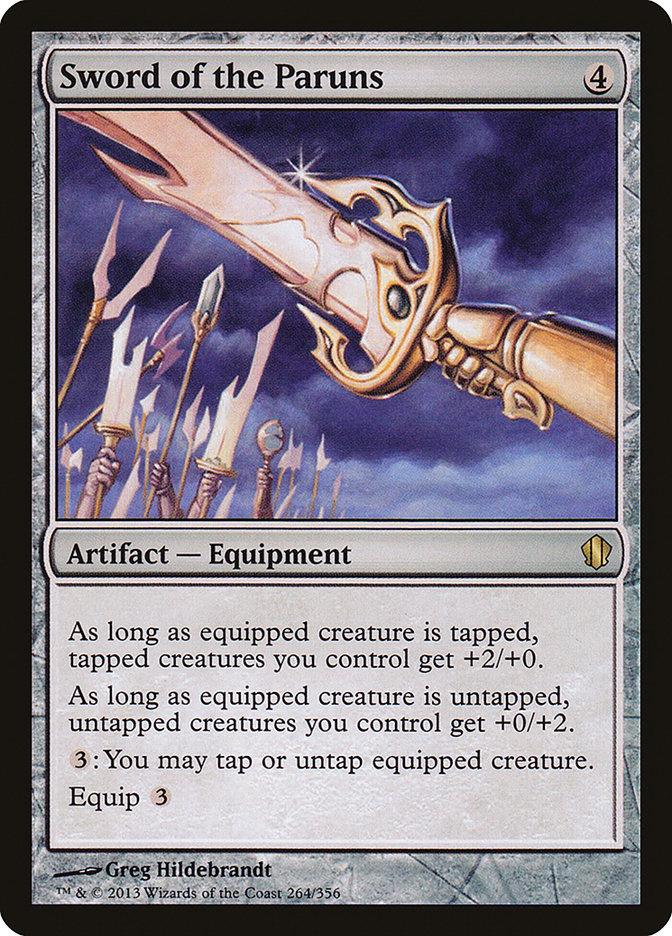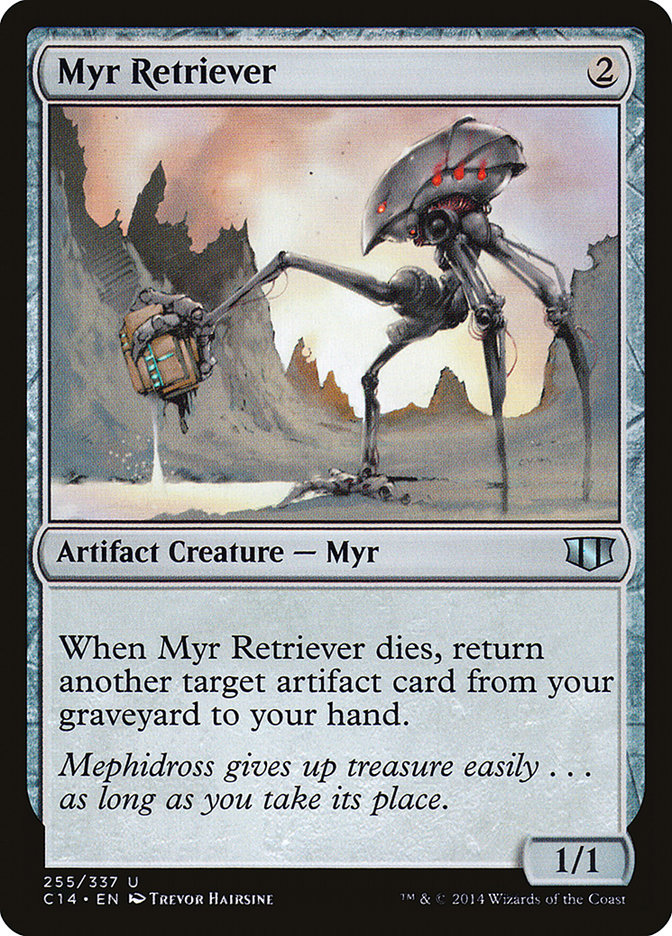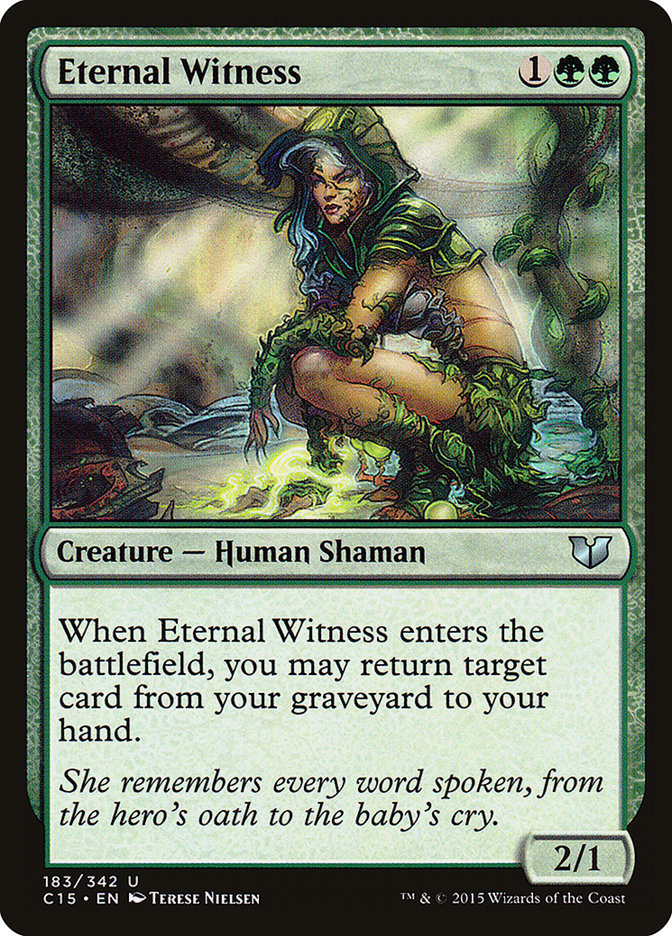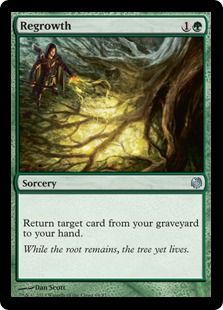Back in May I culled my herd of Commander decks to make room for new and interesting decks for me to enjoy. One of the legendary creatures I was interested in building was Glissa Sunseeker to replace Silvos, Rogue Elemental. Glissa would also help me in my dedication to trying to spread out my colors used in Commander decks.
I know May was long ago; I built other decks first and had to find pieces for Glissa Sunseeker, and after Gen Con I was working all the time with Resident Assistant training and the beginning of a new academic year. Residence Life crunch time is August. So Glissa was a pile of hopeful cards for August. But fear not, she is complete (minus a few cards in my shopping cart) and ready to rumble!
Glissa hates artifacts. She may lack the protection from artifacts that many of the Viridian elves enjoy, but she can destroy artifacts directly. Leveraging this effect is easier than you realize. Mana rocks, Equipment, and artifact creatures are plentiful in multiplayer games. But sometimes something that is not an artifact needs to be destroyed. There are a few cards that can help turn permanents into artifacts for Glissa to seek out.
With these three cards, we can start changing lots of things into destructible bits of metal. Of course, we will want to include a few artifacts of our own. The artifacts can be destroyed for value when there are not exciting targets among our enemies. The goal isn’t a convoluted mass destruction plan; it is more tactical in aim.
Glissa’s Goals
When building the deck, I realized that Glissa Sunseeker as a commander pulls a deck in multiple directions. As my article last week showed, I enjoy a challenge of working with a commander that wants several things in a deck. Glissa has three major needs and a fourth want for the deck. The first is that she needs mana and by extension ramp cards. Her effect requires mana to use, in a non-direct way. To destroy an opponent’s Gilded Lotus requires five mana in your mana pool: float five mana, activate Glissa, blow up the Gilded Lotus. Easy-peasy. Ramp spells make this possible.
After mana is covered, Glissa’s next concern is artifacts. As I said, they are common, but Liquimetal Coating and friends are critical for being able to target a non-artifact permanent to destroy with Glissa. In addition, artifacts like Solemn Simulacrum and Wurmcoil Engine are useful for their effects and Glissa’s ability to destroy them when needed.
Untap effects help Glissa reload and destroy multiple permanents a turn. When going for this line of play, make sure that you double-check your math to destroy everything you need. Glissa will only destroy an artifact with a converted mana cost exactly equal to the mana in your mana pool. Exactly. If you use mana to untap Glissa, you need to have the right mana to build to the new target or to scale down to the new target.
The final things that Glissa wants, but doesn’t technically need, are mana doublers. The mana doublers help Glissa target anything in Commander. The doublers are a pseudo-ramp option, enabling us to make power plays. Glissa wants to smash things, but we also want to have something to contribute. If an opponent has nothing to blow up, we destroy our own things, which is why we want the doublers. Destroying our own cards for value doesn’t do anything to win the game; the mana doubler allows us to contribute to the battlefield and generate value.
Mana Doublers and Mana Sinks
Originally Glissa Sunseeker was a challenge because of mana burn. With that rule removed, we no longer have a concern of burning ourselves to death just trying to get value from our commander. The mana doublers would have added to the mana burn problem; now they add to a different issue. Despite aiding Glissa’s reach, they do little on their own. Tapping out for Mana Reflection in the hopes it tables is… not great. Waiting to use the mana doubler to do something is often the better play. How many times are Commander players stuck with a pile of lands and nothing relevant to do with them? It is even more embarrassing when they tap for two or three mana each.
How do we use the extra mana in a productive way? With mana sinks. Mana sinks are cards that let us bleed off the extraneous mana into doing something useful. Like a valve on a pipe, they allow us to relieve pressure, in this case mana pressure on non-productivity.
Mana sinks come in a wide variety. The most intense would be Helix Pinnacle. Unfortunately, Helix Pinnacle is one of the worst possible mana sinks for this deck’s purposes. Helix Pinnacle does nothing until the last counter is placed. But a card like Ant Queen is much more effective. The queen turns every two mana into an insect. With a mana doubler, Ant Queen turns every single land into a token.
Tokens are among the most common mana sinks because they provide immediate battlefield presence. While the previous example used permanents, spells can function as mana sinks too. Reach of Branches is not fancy, but it is recurrable and turns chunks of mana into something useful.
Wurmcalling is useful for two reasons: it has buyback and it adjustable. Buyback is critical since we want to keep the mana sinks available for later turns. Being adjustable helps to use whatever mana was being borrowed by Glissa to destroy an artifact. Sprout Swarm is the less impressive, but more useful little sibling to Wurmcalling. Sprout Swarm always makes a 1/1 Saproling, but the Convoke ability makes the card able to quickly get out of control. Did I mention it is an instant? Need a blocker, done. Need attackers, done. Need to use mana during an opponent’s turn, done. The card does everything this deck is looking for in a mana sink.
Other token makers work as redundant cards to ensure we draw the effect we need. Jade Mage, Centaur Glade, and Nemata, Grove Guardian help make sure we can draw a token producer and have replacements when they die. Commander players who know what they are doing respect and destroy token producers when they can. We’ll need extras throughout the game.
There are also a couple of utility mana sinks like Trading Post and Thornling. These two cards do everything. Trading Post gets back artifacts and makes Goat tokens. I can be honest that Goat tokens are a major draw for playing this card. Thornling allows us to spend all of our mana on a bunch of effects. Don’t get cute and shrink Thornling’s toughness just to raise it, though; you are asking for a random –X/-X effect to blow you out.
Mana sinks also have combo potential. I stayed away from it in this build, but there are many mana sinks that will help make them go infinite. Staff of Domination is infamous for this. I am not capable of running this card and keeping a deck fun. Every time I read the Staff, I start thinking about how to make infinite mana, life, and cards.
Other mana sinks I avoided are Sensei’s Divining Top, Gemstone Array, and Stonewood Invoker. The invoker is just trying way too hard and I’m not ready to walk that path. Gemstone Array is cool, but I’m not really interested in banking mana for a future turn or converting infinite mana of one color to another. Then there is Sensei’s Divining Top. I see this card far too often at my LGS and I am sick of people saying that every Commander deck should run Top. I’d rather use Mirri’s Guile for filtering. I know that I should be playing the Top, but I really do not want to add it to this deck.
Glissa Sunseeker Package
So far the deck is about ramping to a stupid amount of mana and then doing something (hopefully) productive with that mana. Time to focus on Glissa. This is the easy part of the deck. Glissa is more than just removal; she provides a value engine that we need to work a little to utilize. I love me some engine commanders.
Scars of Mirrodin block was a helpful few sets for Glissa Sunseeker. Spine of Ish Sah is the most obvious to use, and possibly the best. The artifact destroys any permanent, even the ones that green struggles to interact with. Even better, when the Spine is put into a graveyard, it does a boomerang impression and comes right back to our hand. With Glissa this becomes a little engine that could: destroy the Spine of Ish Sah, cast the Spine of Ish Sah, destroy a permanent. Repeat as necessary.
However, Glissa can do more than just destroying artifacts to allow us to destroy anything else. Ichor Wellspring and Mycosynth Wellspring provide enters-the-battlefield and death triggers. Solemn Simulacrum joins the crew of cards that generate value with our Commander. Don’t rush into destroying the artifacts when you don’t need to do so. This applies to Myr Retriever, Junk Diver, and Myr Sire as well; we can destroy them with Glissa but we don’t need to. We can wait for the creatures to die in combat or through a Wrath of God or other sweeper.
The Glissa package also reached back to a bit of the lore from the original Mirrodin lore. I’ve included a couple of legendary Equipment cards to help Glissa and the other creatures in the deck. Sword of Kaldra is a forgotten gem, giving +5/+5, and whenever the creature deals damage to a creature, the damaged creature is exiled. Any damage. Glissa’s first strike makes the exile effect even better. The Shield protects whatever we need to live. Shield of Kaldra handily protects the other pieces of Kaldra. The Helm gives multiple useful keywords, and with all three pieces, we can even start making 4/4 Avatar tokens; Helm of Kaldra doubles as a mana sink with all three pieces out.
Glissa Sunseeker taps, so if we want to active our commander multiple times in a turn, we will need a way to untap her. Thousand-Year Elixir and Magewright’s Stone are the obvious untappers that everyone turns to. We will too; they just aren’t interesting to talk about. Scryb Ranger lets us untap anything, and the flash ability can provide key interactions in a jam. If this build had more Elves, we could use Wirewood Symbiote. If you make Glissa with an Elf focus, Wirewood Symbiote is usually the better card, especially if you have an Elvish Visionary to return to your hand. Sword of the Paruns is an all-around useful card for the deck. It boosts Glissa, untaps Glissa, boosts other creatures I have, and functions as a combat trick.
Recursion
Green is one of the best colors for getting cards back from the graveyard. The build uses just a few recursion spells and fills out the rest with a couple of creatures. Regrowth and Recollect are the dynamic duo for returning whatever we need. Nature’s Spiral could easily find a slot later, but starting broad is my approach when building. We can tweak later if Recollect is never taking a nonpermanent card.
The last recursion spell is Verdant Confluence. This spell can return cards, find lands, and even pump up creatures. Whatever we need, this can do it. Seasons Past is a card I really would like to work into the deck, but I do not have a spare. I’d likely swap Recollect, but if Verdant Confluence is underperforming, then it will get the ax for Seasons Past.
The recursion creatures start with Eternal Witness, it may be a boring staple card, but it’s just what we need. The artifact creatures of Myr Retriever and Junk Diver help round out the recursion. Looping between the two with Skullclamp is hilarious, and something I hope to do at least once with the deck.
Winning the Game
Sometimes we build flawed decks. It isn’t the concept that has the issue; instead we are so focused on building synergies and making a commander like Glissa Sunseeker work that we have no real way to win the game. You should always have a plan to win the game. Always. It doesn’t need to be the focus of the deck, but you should definitely have some way to close out a game.
Luckily for us, mana sinks are versatile. They work as a win condition too. Is this a coincidence? I think not! Making an inordinate amount of tokens is one way to get a kill. Glissa may only have three power, but the commander damage rule can still work. Our mana sinks can help Glissa clear some opposition and move in for a kill. Then they provide defense and resources to keep our game plan moving.
When mana sinks fail, we turn to big giant creatures. Wurmcoil Engine, Scuttling Doom Engine, and Pelakka Wurm are the main entries here. The artifact creatures provide effects upon their death and Glissa can speed that along if we need. Pelakka Wurm works in a similar way with an enters-the-battlefield and death trigger. We have the option of turning it into an artifact and using Glissa, but we aren’t obligated to destroy any of our fatties if we need their battlefield presence. Other fatties I considered are Darksteel Colossus and Realm Seekers. One is gigantic and hard to remove; the other is gigantic and doubles as a mana sink. Use whatever works best for your build and your playgroup.
Decklist
Creatures (20)
- 1 Sakura-Tribe Elder
- 1 Myr Retriever
- 1 Solemn Simulacrum
- 1 Wood Elves
- 1 Silklash Spider
- 1 Eternal Witness
- 1 Myr Landshaper
- 1 Junk Diver
- 1 Nemata, Grove Guardian
- 1 Arashi, the Sky Asunder
- 1 Scryb Ranger
- 1 Yavimaya Dryad
- 1 Thornling
- 1 Ant Queen
- 1 Pelakka Wurm
- 1 Wurmcoil Engine
- 1 Perilous Myr
- 1 Myr Sire
- 1 Jade Mage
- 1 Scuttling Doom Engine
Lands (37)
Spells (42)
- 1 Heartbeat of Spring
- 1 Mirri's Guile
- 1 Sylvan Library
- 1 Sol Ring
- 1 Regrowth
- 1 Rampant Growth
- 1 Kodama's Reach
- 1 Helm of Kaldra
- 1 Skullclamp
- 1 Shield of Kaldra
- 1 Vernal Bloom
- 1 Sword of Kaldra
- 1 Lightning Greaves
- 1 Extraplanar Lens
- 1 Doubling Cube
- 1 Centaur Glade
- 1 Thran Forge
- 1 Skyshroud Claim
- 1 Recollect
- 1 Sword of the Paruns
- 1 Magewright's Stone
- 1 Gauntlet of Power
- 1 Wurmcalling
- 1 Hunting Wilds
- 1 Sprout Swarm
- 1 Thousand-Year Elixir
- 1 Diviner's Wand
- 1 Reach of Branches
- 1 Mana Reflection
- 1 Crystal Ball
- 1 Cultivate
- 1 Liquimetal Coating
- 1 Spine of Ish Sah
- 1 Ichor Wellspring
- 1 Caged Sun
- 1 Mycosynth Wellspring
- 1 Swiftfoot Boots
- 1 Ranger's Path
- 1 Trading Post
- 1 Nissa's Pilgrimage
- 1 Verdant Confluence
- 1 Zendikar Resurgent

My Goals
I have a few goals for the deck. I want to have fun playing a deck that makes an absurd amount of mana and does some silly things with mana sinks. My problem with Silvos, Rogue Elemental was when I had a ton of mana and nothing to do. The mana sinks, the artifact shenanigans to function as removal, and effects to try to loop for value give me something to do to while I play. I love building incremental advantage and this provides plenty of opportunity.
Another goal is for my opponents to have fun. I do not want to use Mycosynth Lattice and a million untappers to machine gun my opponents’ everything. If I want to play mass land destruction, I’ll just run a dedicated deck for it without all the convoluted loops. Additionally, I want people to see new things. For players like me, Mirrodin is not that old, but it really, really is. Many players have never seen Glissa Sunseeker because she is not one of the crazy broken cards from the block. Showing off strange cards in builds that are non-traditional is a big source of enjoyment for me and my LGS. I like when my friends describe a deck as “whatever concoction Erik is currently playing.”
My final goal is to spread my deck tiers a bit more. I want to bump up a couple of decks to Hardcore tier, but doing so would throw off my balance of tiers, so I’m adding in some lower-tier decks like Dromoka, the Eternal functional reprints in Casual tier and this Glissa Sunseeker deck, which I hope falls into the Normal Tier. I am always recommending that people have a spread of deck options and power for gaming so that everyone’s need can be met.
Experience and Wrap-Up
I will not have played Glissa until yesterday. But my article deadline was before then, so the play update will come next week. I’ll fill in everyone and then jump into my next topic. In the meantime, try to make your own off-the-wall deck or dredge up an older card to make awesome. What do you think of this deck? Which tier do you think I hit: Casual, Normal, Hardcore, or Insane? Are there cards that should be vital to this build I excluded?


